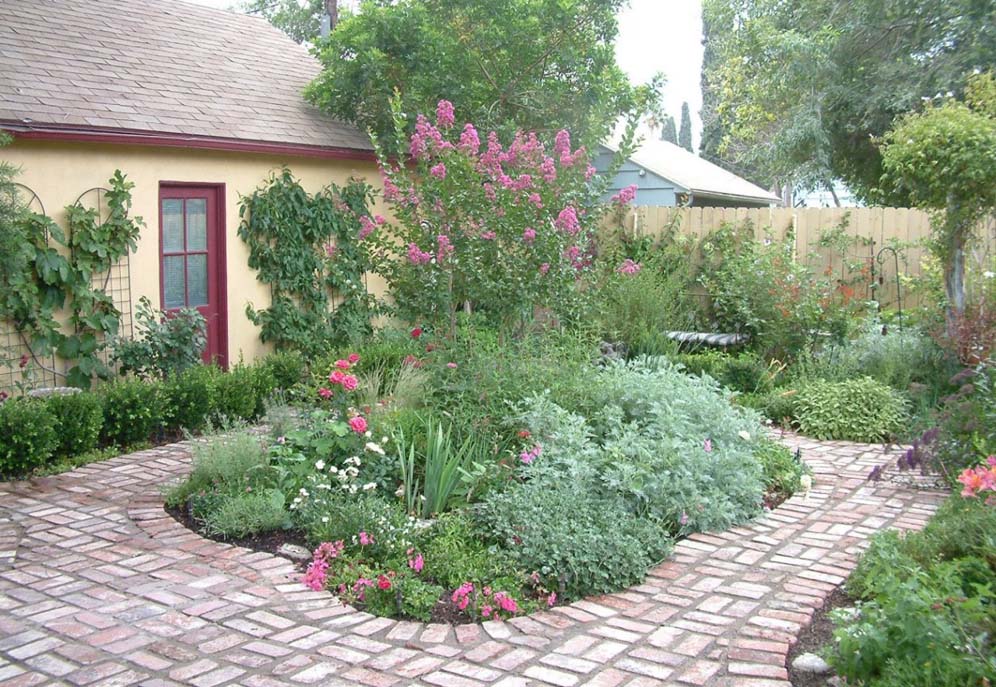
Common name:Muskogee Crape Myrtle
Botanical name:Lagerstroemia 'Muskogee'
This Crape Myrtle hybrid is a popular tree which grows to 25' tall and 12' wide. It blooms with lavender flowers in the summer; leaves turn red in fall. It is mildew resistant and does well in areas with hot summers. Crape Myrtles bloom on new wood so prune in winter or early spring to increase flowering. - Carolyn Shaffer, Dudek and Associates

Common name:Fig Edible
Botanical name:Ficus carica
This small tree produces wonderful figs that are a brownish red color.

Common name:Hybrid Tea Rose (selections)
Botanical name:Rosa Hybrid Tea varieties
These shrubs and vines are the most loved in the Western USA and are very resilient. They come in a wide variety of sizes and colors and are easy to maintain with proper care. They can be used in a water-conserving garden with careful attention to irrigation practices.

Common name:Ivy Geranium
Botanical name:Pelargonium peltatum
Clouds of single flowers are produced from spring through fall on this plant, which should be planted in areas that receive part sun. -Monterey Bay Nursery

Common name:Sea Lavender, Statice
Botanical name:Limonium perezii
This mounding shrub will reach about 3' high and has large, dark green leaves with small blue and purple flowers that bloom in spring and summer.

Common name:Powis Castle Artemisia
Botanical name:Artemisia 'Powis Castle'
This mounding shrub reaches 3' high and up to 5' wide with fine silver foliage. - Cornflower Farms
Using Water Wisely
An efficient watering system applies the right amount of water to the right parts of the garden at the right time. This conserves water and saves you money.
Click in the green box for more information
| Designer: Nan Simonsen Nanscapes | Step Away from Pink Delights |
Photographer: GardenSoft |
Soils and Compost:
Incorporate compost 6" into your soil to retain water, reduce compaction, feed earthworms, and provide valuable nutrients to your plants.
Water Saving Tip:
Mulching and adding compost to soil can minimize evaporation and help soil absorb and store water.
Integrated Pest Management:
Attract, or buy beneficial insects such as ladybugs and lacewings to control pest outbreaks in your garden.

